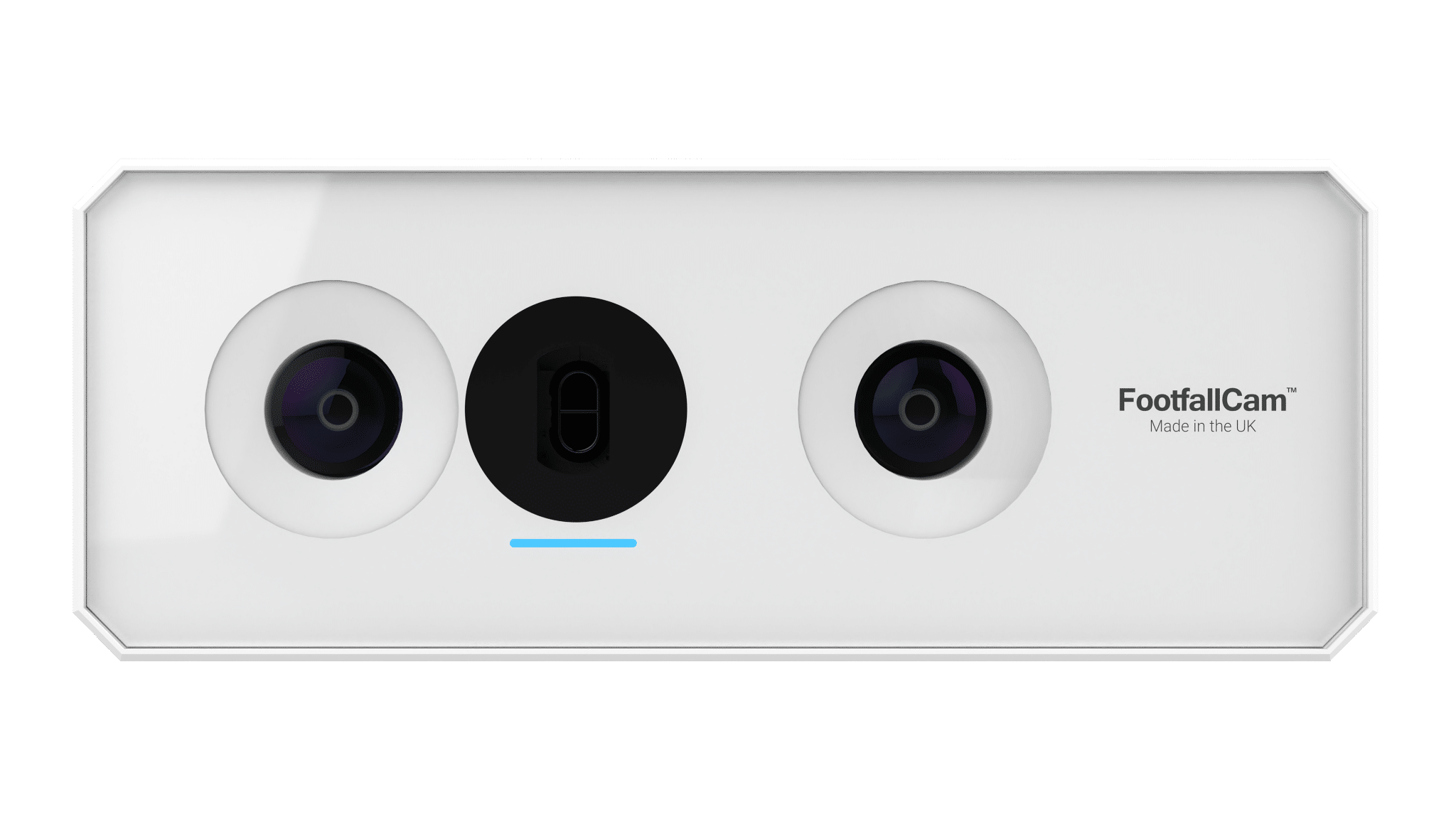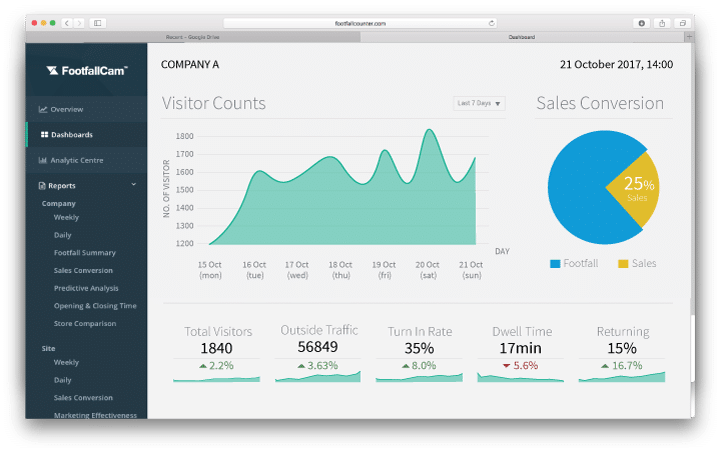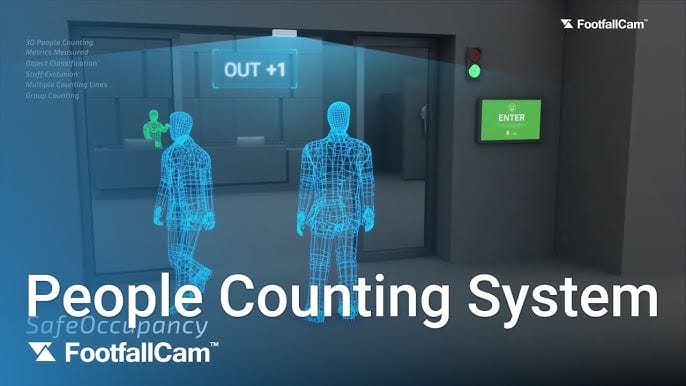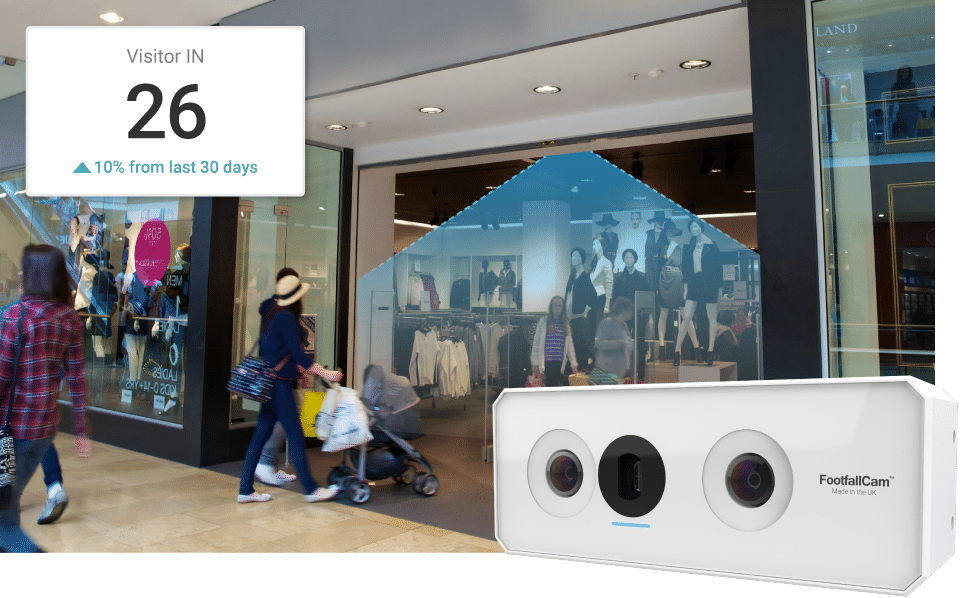- Home
- About Us
- Products
- Electronic Article Surveillance System EAS / Retail Anti theft Systems
- Display Stands
- Restaurant Pager
- People Counting Systems
- Queue Management Systems
- Access Control System
- Time Attendance Systems
- Audio & Visual System Solutions
- Display Solutions
- CCTV Cameras in Qatar: Enhancing Security Solutions
- Time Lapse Construction Camera
- Flap Barrier, Speed Gates, Turnstiles Access Control
- Gate Barriers System & Bollards in Qatar
- Parking Management & Gate Automation
- Library Management Systems
- IT & Telecom
- Lockers & Key Management Systems
- Intrusion Alarm System
- Perimeter Security
- Vehicle Tracking
- Time Recorders & Time Stamps
- Emergency Exit Door Alarms
- Clients
- Contact Us
- Support
Contents
- 1 What are People Counter Sensors?
- 1.1 How Do People Counter Sensors Work?
- 1.1.1 Emerging Technologies in People Counters
- 1.1.2 Different Models of People Counter Sensors
- 1.1.3 Emerging Trends in People Counter Sensor Models
- 1.1.4 Benefits of People Counter Sensors
- 1.1.5 Additional Benefits
- 1.1.6 Best Practices for Using People Counter Sensors
- 1.1.7 Case Studies
- 1.1.8 Common FAQs
- 1.1.9 Additional Information
- 1.1.10 Contact Axle Systems for People Counter Sensors in Qatar
- 1.1 How Do People Counter Sensors Work?
What are People Counter Sensors?
People counter sensors are advanced devices designed to measure foot traffic in specific areas by counting individuals who enter or exit a defined space. These sensors are commonly used in retail outlets, malls, airports, libraries, museums, and event venues to analyze visitor behavior and optimize space utilization. With cutting-edge technologies such as infrared beams, thermal imaging, and AI-based video analytics, people counter sensors provide businesses and organizations with valuable insights into customer trends and operational efficiency.
How Do People Counter Sensors Work?
People counter sensors work by employing various advanced technologies to detect and count individuals passing through a specific area. These sensors are designed to provide accurate and real-time data, making them invaluable for businesses, public institutions, and event organizers. Let’s explore the key technologies used in people counter sensors and how they function in greater detail:
1. Infrared Technology
Infrared people counters use an invisible beam of light emitted across a doorway or an entry point. When someone walks through and interrupts the beam, the system records a count. This technology is among the most widely used due to its simplicity and cost-effectiveness.
- Advantages:
- Affordable and easy to install.
- Works effectively in low-light or brightly lit environments.
- Suitable for small-scale applications such as retail shops or libraries.
- Limitations:
- Can only count individuals passing one at a time; not suitable for large crowds.
- Cannot distinguish between different individuals (e.g., adults, children, or groups).
2. Thermal Imaging
Thermal sensors detect the natural heat emitted by human bodies to count individuals. These sensors generate heat maps and track movements, making them highly effective in areas with challenging lighting conditions or high traffic density.
- Advantages:
- Can operate in complete darkness, making them ideal for outdoor events or dimly lit venues.
- High accuracy in crowded environments.
- Effective in distinguishing between humans and objects or animals.
- Applications:
Thermal imaging sensors are commonly used in airports, museums, and large event venues where accurate crowd management is critical.
3. Video-Based Analytics
Video-based people counters use cameras combined with AI-powered algorithms to identify and track individuals. These systems analyze video feeds in real time, enabling them to count people even in complex environments like busy malls or transportation hubs.
- Advantages:
- Highly accurate, even in large crowds.
- Capable of differentiating between adults, children, and even wheelchairs or strollers.
- Provides additional insights, such as movement patterns and dwell times.
- Advanced Features:
- Heat mapping: Identifies popular zones within a venue.
- Integration with CRM or retail analytics tools for detailed customer insights.
- Multi-directional tracking: Counts people entering and exiting simultaneously.
- Challenges:
- Requires higher initial investment compared to other technologies.
- May involve privacy concerns; hence, compliance with data protection laws is crucial.
4. Wi-Fi/Bluetooth Tracking
Wi-Fi and Bluetooth tracking sensors detect signals emitted by smartphones or wearable devices. These sensors capture the unique identifiers (MAC addresses) of devices as people pass through a monitored area.
- Advantages:
- No physical interaction is needed, making it ideal for large-scale data collection.
- Provides additional insights like time spent in an area and repeat visits.
- Can cover a wide area without requiring multiple physical installations.
- Use Cases:
- Shopping malls and smart cities to track foot traffic trends over time.
- Event organizers to measure attendance and movement patterns.
- Airports to monitor passenger flow and reduce wait times.
- Considerations:
- Requires opt-in from users to comply with privacy regulations.
- Limited to individuals carrying Wi-Fi-enabled devices.
5. Pressure Mats
Pressure mats are embedded into the floors at entry or exit points and register a count whenever someone steps on them. These mats use sensors to detect changes in weight and pressure, providing accurate foot traffic data.
- Advantages:
- Simple and reliable technology for low-traffic areas.
- Ideal for entry points where people typically walk in a single file.
- Easy to maintain with minimal moving parts.
- Applications:
- Small retail stores and libraries where cost-effective solutions are needed.
- Warehouses and industrial settings to monitor worker movement.
- Limitations:
- May struggle to count accurately in high-traffic environments.
- Cannot differentiate between different types of users or objects.
Emerging Technologies in People Counters
As technology advances, new solutions are emerging to enhance the functionality of people counter sensors. These include:
- LiDAR Technology
LiDAR sensors use laser light to create a 3D map of a space, enabling highly accurate counting and even crowd density measurement. This is especially useful for smart city applications and high-density environments. - AI-Powered People Tracking
With the help of advanced AI, people counter sensors can now predict crowd movements, detect loitering, and even alert management to abnormal patterns such as overcrowding. - Hybrid Systems
These systems combine multiple technologies (e.g., thermal imaging and video analytics) for improved accuracy and versatility.
Different Models of People Counter Sensors
People counter sensors come in various models, each tailored to specific applications and environments. Let’s explore these models in more detail to understand their unique features, benefits, and use cases.
1. Single-Beam Infrared Counters
Single-beam infrared counters are among the simplest and most cost-effective people counting solutions. These sensors work by emitting an invisible infrared beam across a doorway or entry point. When the beam is interrupted by a person walking through, the system registers a count.
- Features:
- Compact and easy to install.
- Low power consumption.
- Requires minimal maintenance.
- Ideal Use Cases:
- Small retail stores looking to measure customer footfall.
- Libraries and museums to track visitor numbers.
- Office spaces to monitor employee traffic.
- Limitations:
- Cannot distinguish between individuals walking side by side.
- Less accurate in high-traffic areas or for multi-directional movements.
2. Overhead Video Sensors
Overhead video sensors are sophisticated devices installed on ceilings to capture a bird’s-eye view of an area. These sensors use cameras and advanced video analytics to count individuals entering and exiting a space with high precision.
- Features:
- AI-powered algorithms to differentiate between adults, children, strollers, and wheelchairs.
- Can cover wide areas with a single sensor.
- Capable of tracking movement patterns and dwell times.
- High accuracy even in crowded environments.
- Ideal Use Cases:
- Shopping malls and large retail outlets to monitor customer flow.
- Airports to track passenger movement through terminals.
- Exhibition halls and event venues for real-time crowd management.
- Benefits:
- Provides additional analytics such as heat maps and zone popularity.
- Integrates seamlessly with business analytics tools.
- Considerations:
- Higher installation and operational costs compared to basic sensors.
- Requires compliance with privacy laws and data protection regulations.
3. Thermal People Counters
Thermal people counters are designed to detect body heat and use thermal imaging technology to count individuals. These sensors excel in challenging environments where other technologies might struggle.
- Features:
- Operates effectively in low-light or completely dark conditions.
- Immune to environmental distractions such as shadows, reflections, or changing light levels.
- Suitable for detecting individuals in crowded spaces.
- Ideal Use Cases:
- Outdoor areas like parks or festivals, especially at night.
- Museums and galleries with controlled lighting.
- Warehouses and logistics centers.
- Benefits:
- Unaffected by visual obstructions like smoke or glass.
- Highly accurate in high-density environments.
4. Multi-Sensor Systems
Multi-sensor systems integrate multiple technologies—such as infrared, video, and thermal imaging—into a single solution. These systems are designed for complex and high-traffic environments, offering comprehensive and precise data.
- Features:
- Combines multiple sensor types for superior accuracy.
- Can cover large areas with overlapping fields of view.
- Capable of managing data from multiple entry and exit points simultaneously.
- Ideal Use Cases:
- Stadiums and sports arenas to monitor large crowds.
- Airports and transportation hubs to manage passenger flow.
- Hospitals and healthcare facilities for occupancy monitoring.
- Benefits:
- Reduces blind spots in coverage.
- Offers enhanced accuracy through data fusion.
- Considerations:
- Requires professional installation and integration.
- Higher cost due to advanced features and multi-technology setup.
5. Smart IoT People Counters
Smart IoT (Internet of Things) people counters are cutting-edge devices equipped with connectivity features that enable real-time data collection and remote monitoring. These counters often integrate with cloud-based platforms for advanced analytics and reporting.
- Features:
- Wireless connectivity for real-time data updates.
- Remote access via mobile apps or web dashboards.
- Integration with other IoT devices, such as smart lighting or HVAC systems.
- Ideal Use Cases:
- Smart cities to monitor pedestrian traffic and optimize urban planning.
- Large retail chains to analyze customer behavior across multiple locations.
- Co-working spaces to manage occupancy and optimize space utilization.
- Benefits:
- Offers real-time insights into traffic patterns.
- Enables predictive analytics for better decision-making.
- Reduces operational costs through automation and efficiency.
- Considerations:
- Requires stable internet connectivity for optimal performance.
- May involve additional costs for cloud storage and analytics services.
Emerging Trends in People Counter Sensor Models
- Edge AI Technology:
Advanced sensors are incorporating edge AI capabilities, allowing data to be processed directly on the device without requiring external servers. This reduces latency and enhances privacy. - Solar-Powered Counters:
Designed for outdoor use, these sensors are eco-friendly and require minimal maintenance. - Augmented Reality Integration:
Some models now integrate with AR applications to visualize foot traffic data in 3D for better decision-making.
Benefits of People Counter Sensors
People counter sensors offer a wide range of benefits across industries, enabling businesses and organizations to operate more efficiently and strategically. Here’s a deeper dive into how these systems can transform operations:
1. Enhanced Decision-Making
People counter sensors provide accurate and actionable foot traffic data, enabling businesses to make informed decisions that drive growth and efficiency.
- Staffing Optimization: By understanding peak hours and foot traffic patterns, businesses can allocate staff more effectively to ensure sufficient coverage during busy times and reduce costs during quieter periods.
- Inventory Management: Retailers can align stock replenishment schedules with high traffic periods, minimizing the risk of running out of popular items.
- Targeted Marketing Efforts: Analyze visitor demographics and behavior to create highly targeted campaigns that resonate with your audience.
Example: A shopping mall can use foot traffic data to decide where to place promotional banners or pop-up stores for maximum visibility.
2. Improved Space Utilization
Understanding how people move through a space allows organizations to optimize layouts, ensuring better traffic flow and comfort for visitors.
- Optimized Store Layouts: Retailers can position popular products in high-traffic zones and improve overall customer navigation.
- Event Planning: Event organizers can design spaces that accommodate large crowds while maintaining comfort and safety.
- Workspace Optimization: Offices can use people counter sensors to determine underutilized spaces and reorganize them for better productivity.
Example: A co-working space can identify which meeting rooms are most frequently used and adjust booking systems accordingly to maximize availability.
3. Better Customer Experience
People counter sensors allow businesses to anticipate customer needs and allocate resources effectively, leading to improved customer satisfaction.
- Faster Service: Insights into peak hours enable businesses to prepare for high traffic, ensuring faster service and shorter wait times.
- Comfort and Convenience: By managing crowd density, businesses can create a more enjoyable environment for visitors.
- Enhanced Shopping Experience: Retailers can adjust their services based on customer flow, such as opening additional checkout counters during busy times.
Example: A café can use data from people counters to decide when to increase staffing or implement table reservation systems during rush hours.
4. Accurate ROI Measurement
Measuring the success of marketing campaigns and promotions becomes easier with people counter sensors, as they provide concrete data on visitor numbers and behavior.
- Promotion Effectiveness: Track changes in foot traffic during specific promotional events to determine their impact.
- Marketing ROI: Understand how campaigns influence customer behavior and adjust strategies for better results.
- Seasonal Trends: Analyze visitor data to prepare for seasonal variations and improve forecasting accuracy.
Example: A retail store can compare foot traffic before and after a major sale to assess the effectiveness of their advertising efforts.
5. Safety and Compliance
People counter sensors are invaluable for maintaining safety and adhering to regulations, particularly in crowded or restricted spaces.
- Occupancy Monitoring: Keep track of real-time occupancy levels to avoid overcrowding and maintain a safe environment.
- Emergency Preparedness: In case of an emergency, sensors help monitor evacuation routes and ensure all individuals are safely accounted for.
- Pandemic Compliance: During health crises like COVID-19, sensors can enforce social distancing by monitoring the number of people in a space.
Example: A gym can use people counter sensors to ensure compliance with capacity limits during peak hours, providing a safe and comfortable environment for members.
Additional Benefits
Environmental Sustainability
- By integrating with smart building systems, people counters can optimize energy usage, such as adjusting lighting or HVAC systems based on occupancy levels.
Real-Time Insights
- Modern people counter sensors offer real-time data analytics, enabling immediate responses to changes in traffic patterns or occupancy.
Scalability
- Whether it’s a small retail store or a large stadium, people counter sensors can scale to meet the needs of various spaces and industries.
Revenue Growth
- By understanding customer behavior and optimizing operations, businesses can enhance customer satisfaction, leading to higher sales and repeat visits.
Best Practices for Using People Counter Sensors
- Strategic Placement
Install sensors at key entry and exit points for accurate data. - Regular Calibration
Ensure the sensors are functioning correctly and are calibrated periodically. - Integration with Analytics
Combine people counters with CRM or POS systems to gain deeper insights. - Data Security
Use encrypted systems to protect customer and business data. - Employee Training
Educate staff on how to interpret and utilize data from the counters.
Case Studies
Case Study 1: Retail Store Optimization
A popular retail chain in Qatar installed video-based people counters in 30 stores to monitor foot traffic. The data revealed peak shopping hours, allowing the chain to optimize staffing schedules. As a result, customer satisfaction scores improved by 25%, and sales increased by 15% during peak periods.
Case Study 2: Airport Efficiency
Hamad International Airport deployed thermal people counters to analyze passenger flow in security lanes. By identifying bottlenecks, the airport reduced wait times by 30% and improved the overall passenger experience.
Common FAQs
- What is the accuracy of people counter sensors?
Modern sensors boast an accuracy of 95% or higher, depending on the technology used. - Can people counters differentiate between adults and children?
Yes, AI-powered sensors can differentiate between different demographics. - Are people counter sensors difficult to install?
Most models are easy to install and can be set up in less than an hour. - Do these sensors require Wi-Fi?
While some models use Wi-Fi for data transmission, others work offline and store data locally. - Can people counters integrate with existing systems?
Yes, they are designed to integrate seamlessly with CRM, ERP, and other management systems.
Additional Information
People counter sensors are not just for businesses; they’re also valuable in public sectors like libraries, museums, and parks. By understanding visitor behavior, these institutions can improve accessibility and create better visitor experiences.
Contact Axle Systems for People Counter Sensors in Qatar
Axle Systems is the leading distributor of people counter sensors in Qatar, offering a wide range of models tailored to your specific needs. With years of expertise in technology solutions, Axle Systems ensures seamless installation and top-notch customer support.
Contact Us Today:
- Website: www.axlesys.com
- Phone: +974 77443731
- Email: info@axlesys.com
By leveraging the latest people counter sensors, businesses can unlock a wealth of actionable insights to enhance operations, customer experience, and profitability. Reach out to Axle Systems to transform your space with cutting-edge technology.





